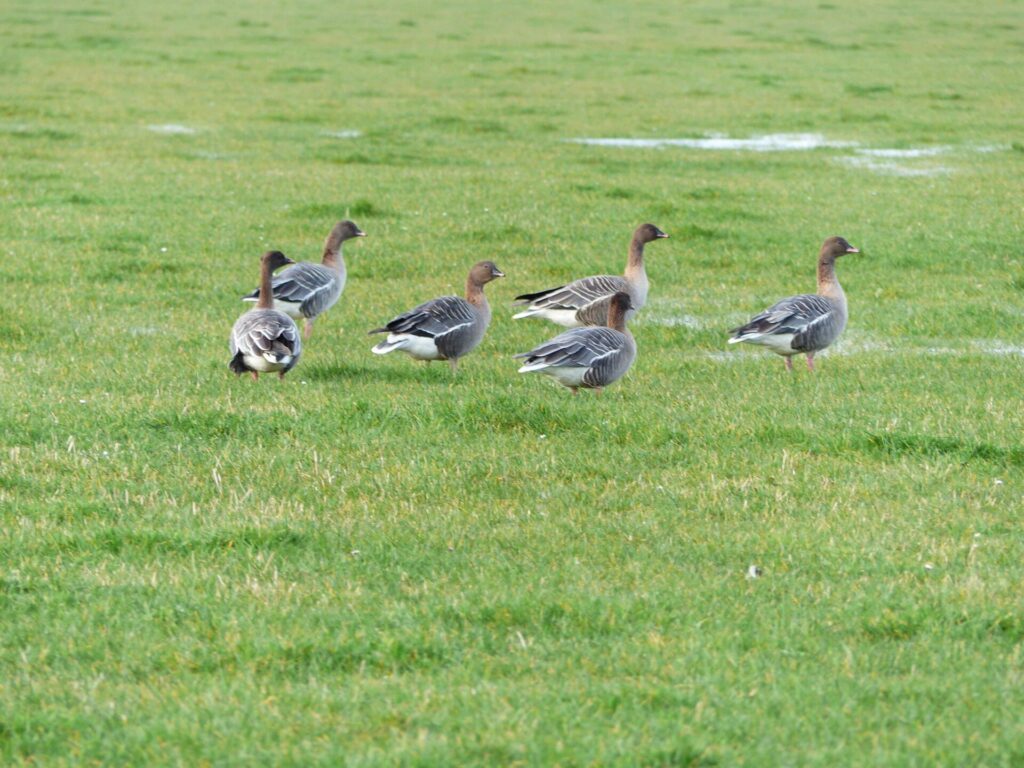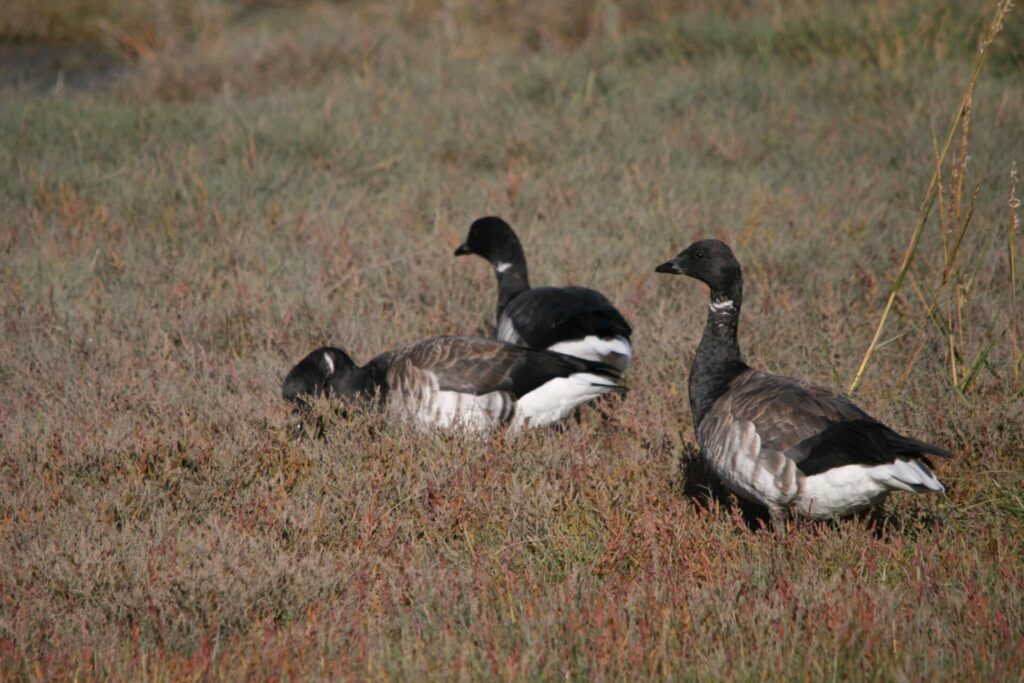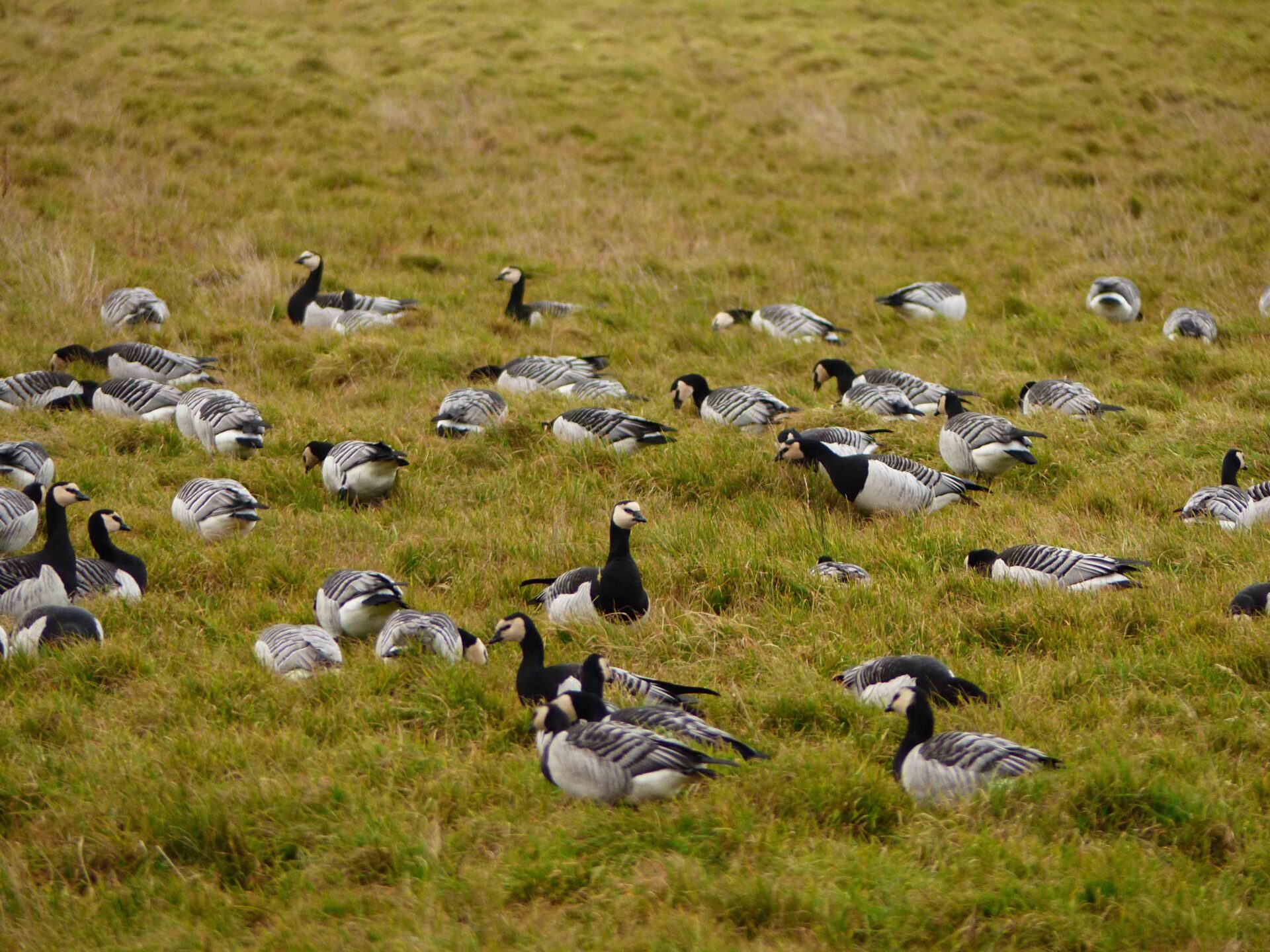The Galloway & Southern Ayrshire UNESCO Biosphere is proud to be a partner organisation and co-hosting events at the Wild Goose Festival 2022, introducing local people and visitors to some of the amazing wildlife and habitats for which the region is recognised internationally.
Southwest Scotland (including the GSA Biosphere) is a winter wonderland for geese, and at this time of year thousands of birds are arriving from across the Arctic to escape the cold weather in our warmer climate. The Solway Firth is a big attraction, with its vast expanses of remote saltmarsh, sand and mud – a perfect roosting area overnight, safe from predators.
At dawn the birds fly inland in vast numbers to their feeding grounds on coastal grasslands and inland fields. Svalbard barnacle geese can be seen feeding during the daytime around the Solway Firth, around Caerlaverock and along the coastline past RSPB Mersehead and to Auchencairn. This population of barnacle geese is very important as the entire Svalbard population winter on the Solway Firth.

Pink-footed geese from Iceland fly further inland, to fields inland and across Dumfries & Galloway; they can be seen feeding at places such as NTS Threave. They are the earliest geese to arrive, with non-breeding birds arriving in late August/September. They make a distinctive high pitched ‘squealing’ call as they fly over in v-shaped skeins.
Loch Ken is home to thousands of pink-footed geese, greylag geese and the rare Greenland white-fronted goose. Greenland white-fronted geese make an amazing journey from Greenland, through to Iceland then across to Dumfries & Galloway, but they are increasingly under threat and in serious decline. This goose is currently being studied to determine more about its migration and the threats it is facing. To find out more about these beautiful birds and to check where they are right now, follow the Galloway Glens goose tracking blog!

The light-bellied brent goose makes an incredible migration each year, from Arctic Canada, across Greenland and Iceland to reach the western tip of Dumfries & Galloway – a journey of over 5,000km. Many birds in this population winter in Ireland but there is a small but important population which feed on eel grass in shallow lochs and bays in Dumfries & Galloway. These can be best seen in Garlieston Harbour, Loch Ryan at the Wig, and Stranraer Harbour.
Find out more about the Biosphere’s incredible geese at Birding for Brents on 23/10 in Stranraer and The Brent Geese of Dumfries & Galloway online event on 24/10, co-hosted by another UNESCO Biosphere across the water at Dublin Bay.
For any questions or queries about the GSA Biosphere, contact [email protected].
